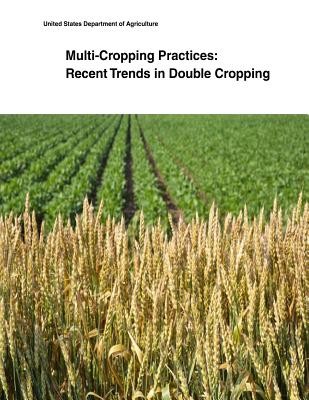
- We will send in 10–14 business days.
- Author: United States Department of Agriculture
- Publisher: CreateSpace Independent Publishing Platform
- Year: 2014
- Pages: 24
- ISBN-10: 1505433908
- ISBN-13: 9781505433906
- Format: 21.6 x 27.9 x 0.2 cm, softcover
- Language: English
- SAVE -10% with code: EXTRA
Reviews
Description
Over the last decade, growing demand for agricultural commodities-for both food and fuel-has increased the incentives for farm operators to increase production. One way to expand production and potentially increase the return to farming is by intensifying the use of existing cropland. One form of intensification is double cropping-the harvest of two crops from the same field in a given year. From 1999 to 2012 double cropping occurred on about 2 percent of total cropland in most years. Soybeans were, on average, the most common crop found on double-cropped acres over this time period, and, in 2012, winter wheat most commonly preceded these soybean plantings. However, regional and temporal variation is apparent in all double-cropping trends, likely indicating farmers' responsive-ness to local conditions and changing market incentives. Although double cropping has the potential to limit the environmental consequences associated with cropland expansion (such as increased soil erosion and loss of wildlife habitat or carbon sinks) as U.S. farmers increase production to meet growing global demand, it also may introduce negative environmental consequences of its own. The trends and analysis provided in this report are intended to support future discussion on the factors influencing its use and help inform discussions about the merits of expanding its use.
EXTRA 10 % discount with code: EXTRA
The promotion ends in 18d.16:16:47
The discount code is valid when purchasing from 10 €. Discounts do not stack.
- Author: United States Department of Agriculture
- Publisher: CreateSpace Independent Publishing Platform
- Year: 2014
- Pages: 24
- ISBN-10: 1505433908
- ISBN-13: 9781505433906
- Format: 21.6 x 27.9 x 0.2 cm, softcover
- Language: English English
Over the last decade, growing demand for agricultural commodities-for both food and fuel-has increased the incentives for farm operators to increase production. One way to expand production and potentially increase the return to farming is by intensifying the use of existing cropland. One form of intensification is double cropping-the harvest of two crops from the same field in a given year. From 1999 to 2012 double cropping occurred on about 2 percent of total cropland in most years. Soybeans were, on average, the most common crop found on double-cropped acres over this time period, and, in 2012, winter wheat most commonly preceded these soybean plantings. However, regional and temporal variation is apparent in all double-cropping trends, likely indicating farmers' responsive-ness to local conditions and changing market incentives. Although double cropping has the potential to limit the environmental consequences associated with cropland expansion (such as increased soil erosion and loss of wildlife habitat or carbon sinks) as U.S. farmers increase production to meet growing global demand, it also may introduce negative environmental consequences of its own. The trends and analysis provided in this report are intended to support future discussion on the factors influencing its use and help inform discussions about the merits of expanding its use.


Reviews